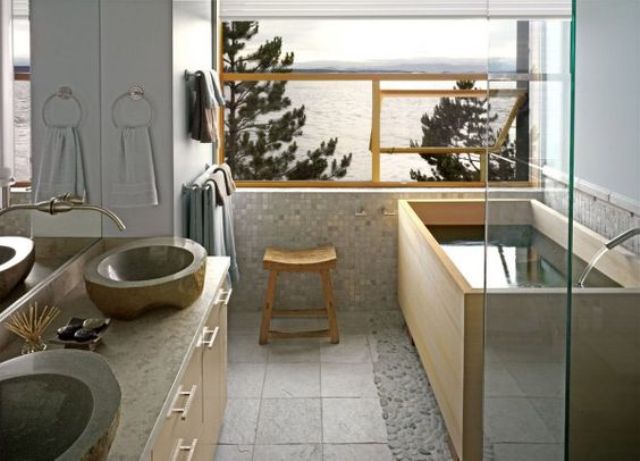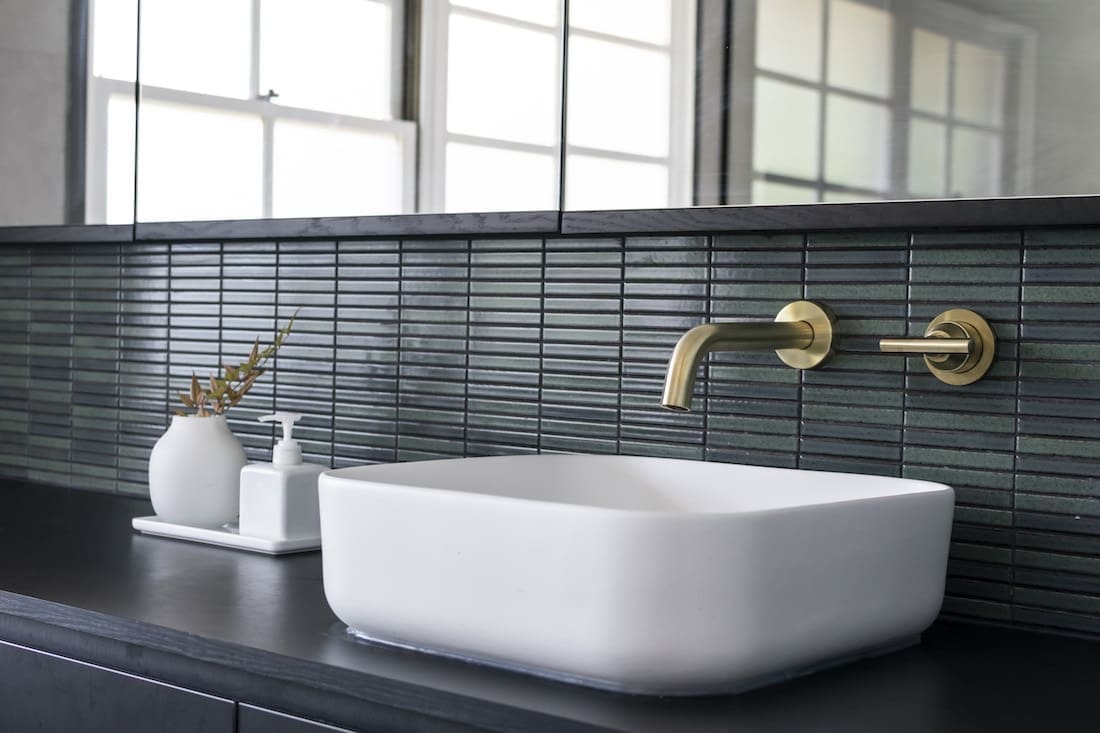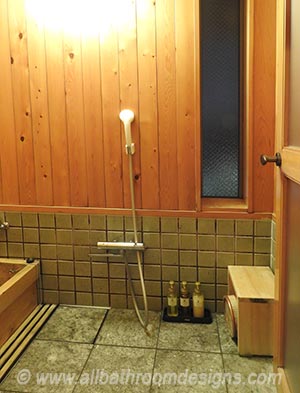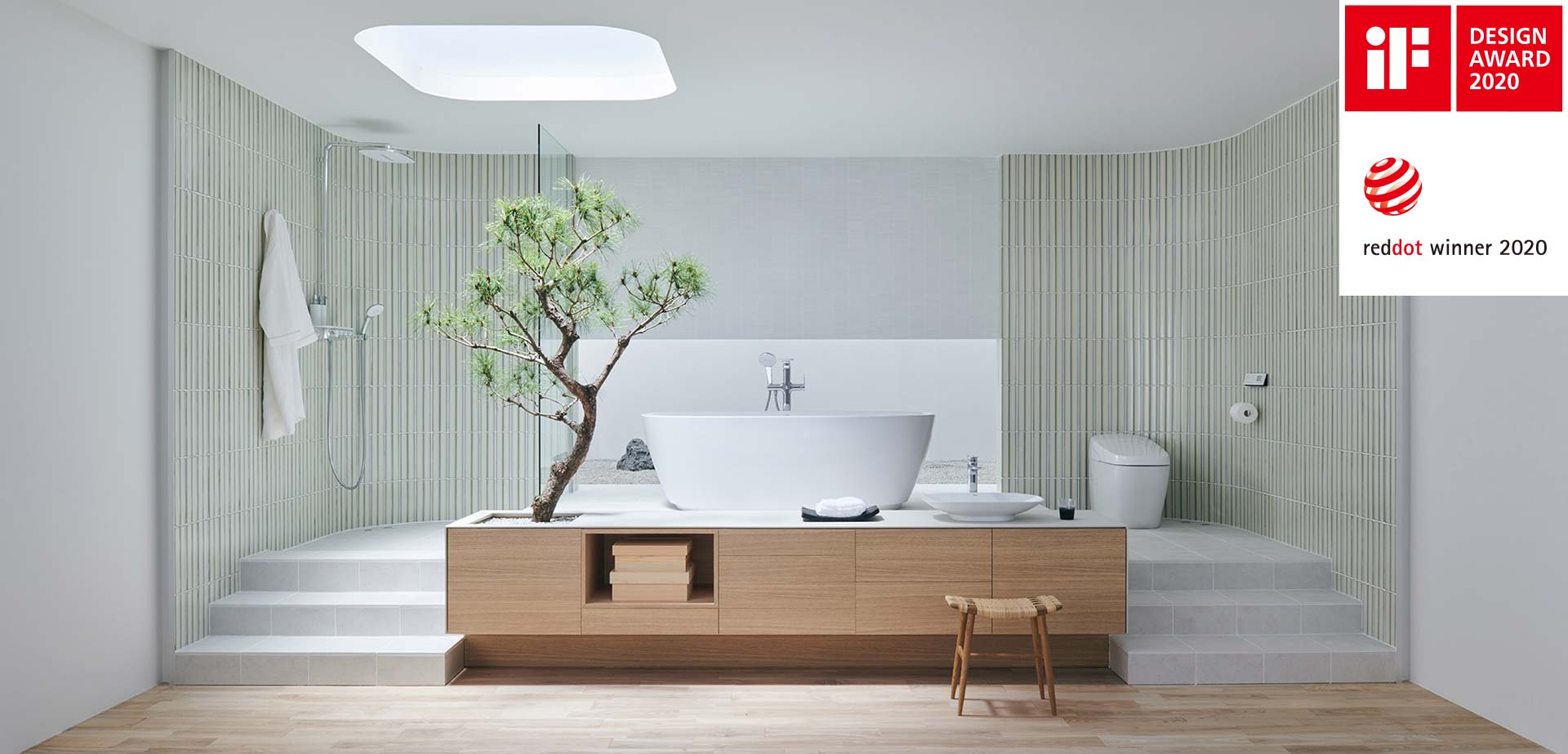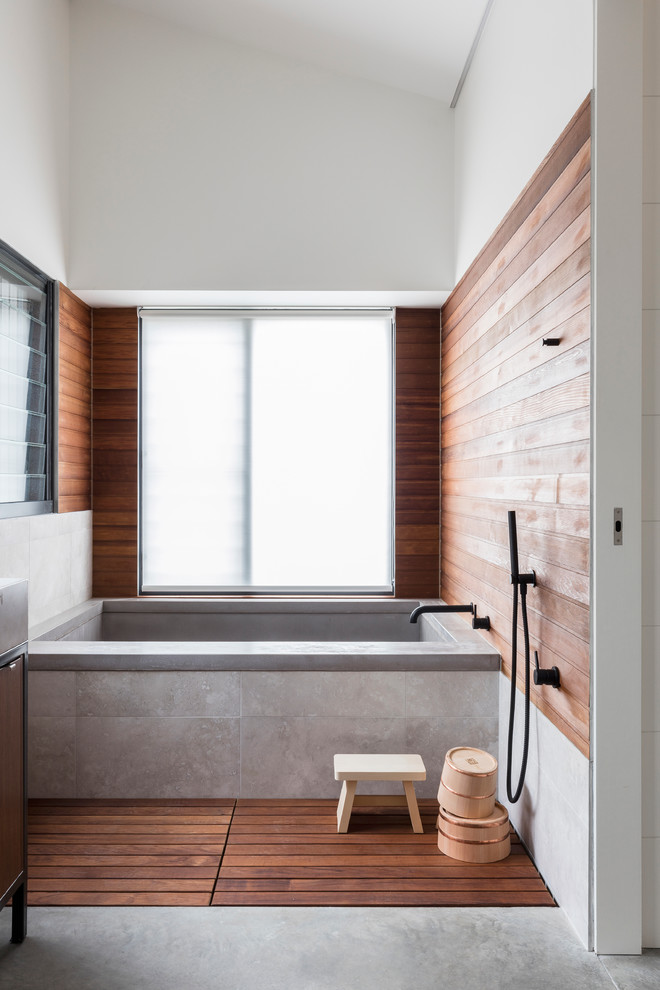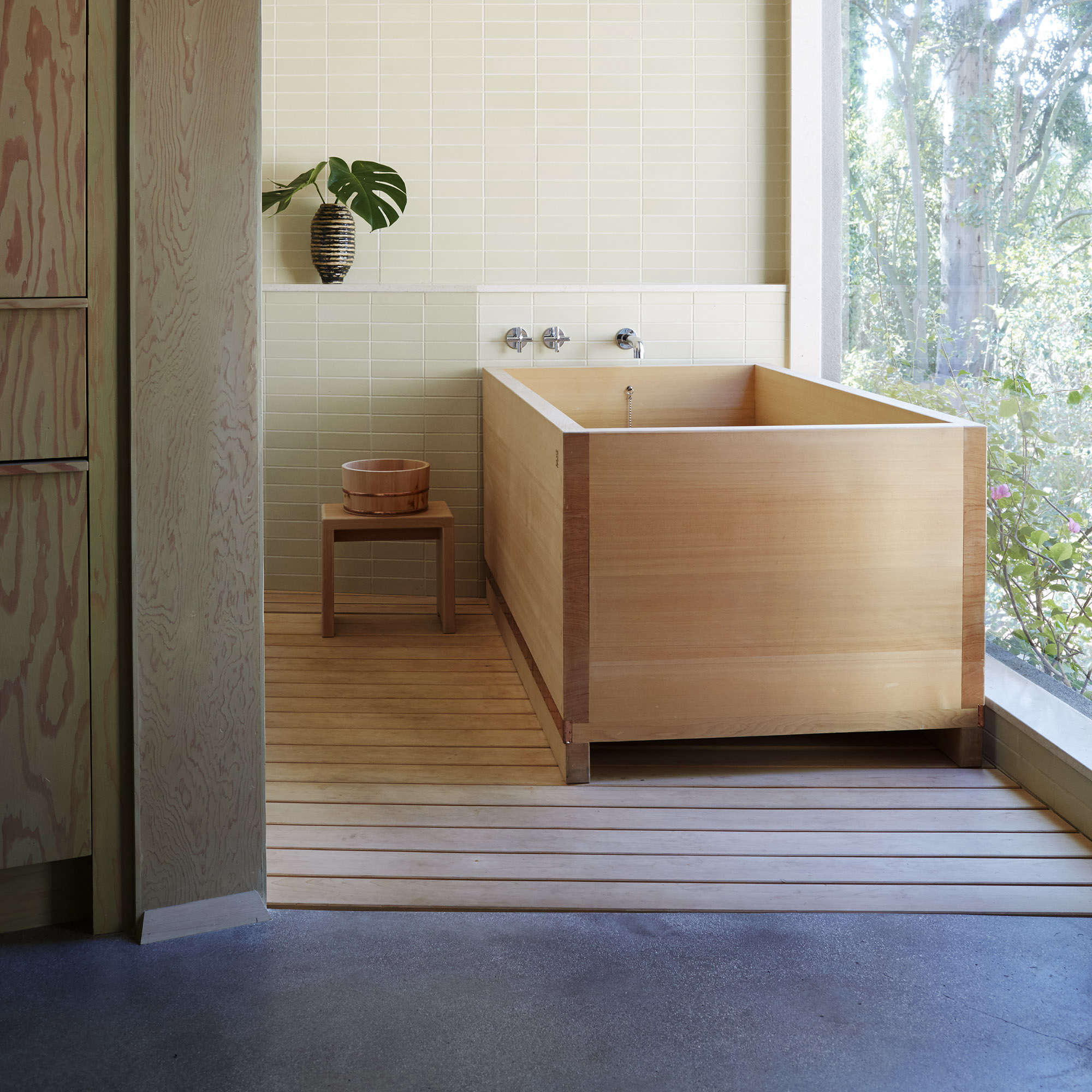History and Cultural Significance of Japanese Bathroom Tile
Japanese culture has a deep-rooted connection to the concept of bathing, which extends to the design and use of bathroom tiles. The history of Japanese bathroom tiles is intertwined with the broader cultural practices of cleanliness, relaxation, and aesthetic appreciation. Understanding the evolution of these tiles provides valuable insights into Japanese traditions and values.
- Ancient Origins: The tradition of bathing in Japan dates back thousands of years, with evidence of early bathing practices found in ancient texts and archaeological sites. Initially, bathing was a communal activity, often conducted in natural hot springs known as onsen. The use of tiles in bathing areas began during this period, as a means to create more hygienic and durable surfaces.
- Influence of Zen Philosophy: The development of Japanese bathroom tile design was also influenced by Zen philosophy, which emphasizes simplicity, natural elements, and harmony with the surrounding environment. This influence can be seen in the minimalist aesthetic of traditional Japanese bathrooms, where neutral colors and organic textures predominate.
- Symbolism and Ritual: In Japanese culture, bathing is not merely a practical necessity but also a ritualistic and spiritual experience. The design of bathroom tiles often reflects this symbolism, with motifs inspired by nature, such as bamboo, cherry blossoms, and flowing water. These elements are believed to evoke feelings of tranquility and purification.
- Integration of Modern Technologies: While traditional Japanese bathroom tile designs remain popular, there has also been a growing integration of modern technologies and materials in recent years. This includes the use of high-tech ceramic tiles with advanced features such as antibacterial coatings, temperature regulation, and self-cleaning properties.
- Preservation of Tradition: Despite these innovations, there is a concerted effort in Japan to preserve traditional craftsmanship and design techniques. Many artisans continue to produce handcrafted tiles using traditional methods, ensuring that the cultural heritage of Japanese bathroom tiles remains intact for future generations.
- Global Influence: The popularity of Japanese bathroom tiles has spread beyond Japan’s borders, with designers and homeowners around the world incorporating Japanese-inspired elements into their bathrooms. This global interest reflects the enduring appeal of Japanese aesthetics and the universal desire for spaces that promote relaxation and well-being.

Traditional Japanese Bathroom Tile Designs and Materials
The traditional design of Japanese bathroom tiles is characterized by simplicity, elegance, and a deep reverence for nature. Drawing inspiration from the natural world, traditional Japanese tiles incorporate motifs and materials that reflect the beauty of the surrounding landscape. From earthy ceramics to soothing neutral tones, these tiles create a serene and harmonious atmosphere in the bathroom.
Ceramic Tiles: Ceramic tiles are the cornerstone of traditional Japanese bathroom design. Known for their durability and versatility, ceramic tiles come in a variety of shapes, sizes, and finishes. In traditional Japanese bathrooms, ceramic tiles are often handmade and feature subtle imperfections that add to their charm and character.
Natural Materials: In keeping with the Japanese aesthetic of wabi-sabi, which embraces the beauty of imperfection and impermanence, natural materials such as stone, wood, and bamboo are commonly used in bathroom tile design. These materials not only lend a sense of warmth and authenticity to the space but also age gracefully over time.
Neutral Colors: Traditional Japanese bathroom tiles typically feature a muted color palette dominated by earthy tones such as beige, brown, and gray. These neutral colors evoke a sense of calm and tranquility, creating a peaceful retreat for bathing and relaxation.
Minimalist Patterns: Japanese design is renowned for its minimalist aesthetic, and this extends to bathroom tile patterns as well. Simple geometric shapes, subtle textures, and delicate patterns inspired by nature are often used to adorn bathroom walls and floors, creating a sense of understated elegance.
Furo: The Japanese Soaking Tub: Central to traditional Japanese bathing is the furo, or Japanese soaking tub. Made from materials such as hinoki wood or ceramic, the furo is typically set into the floor and surrounded by tiles. The design of the tiles around the furo is carefully chosen to enhance the bathing experience, with elements such as built-in benches, alcoves for toiletries, and strategically placed windows to capture views of nature.
Integration of Indoor and Outdoor Spaces: Traditional Japanese bathrooms often blur the boundaries between indoor and outdoor spaces, allowing bathers to connect with nature while bathing. This seamless integration is achieved through the use of large windows, sliding doors, and strategically placed greenery, creating a tranquil oasis within the home.
Innovative Trends in Japanese Bathroom Tile
While traditional Japanese bathroom tile designs hold a timeless appeal, modern interpretations of these designs incorporate innovative materials, technologies, and aesthetics to meet the evolving needs and preferences of homeowners. From sleek, minimalist styles to bold, experimental designs, contemporary Japanese bathroom tiles offer a wide range of options for creating unique and luxurious spaces.
Sleek and Minimalist Styles: In line with the principles of Japanese design, many modern Japanese bathroom tiles feature sleek lines, minimalist patterns, and clean surfaces. High-gloss finishes and monochromatic color schemes contribute to a sense of simplicity and sophistication, creating a serene and uncluttered environment.
Textured and Patterned Tiles: While simplicity remains a hallmark of Japanese design, there is also a growing interest in textured and patterned tiles that add visual interest and depth to the space. Textured tiles, such as those with raised patterns or embossed designs, create a tactile experience that engages the senses and adds a layer of complexity to the design.
Natural and Sustainable Materials: As sustainability becomes an increasingly important consideration in design, many modern Japanese bathroom tiles are made from natural and eco-friendly materials such as recycled glass, bamboo, and reclaimed wood. These materials not only reduce environmental impact but also add warmth and character to the space.
Innovative Technologies: Advancements in technology have led to the development of innovative bathroom tile solutions that enhance comfort, convenience, and hygiene. For example, some tiles are equipped with built-in heating elements to keep the floor warm during cold winter months, while others feature antibacterial coatings that inhibit the growth of mold and mildew.
Customization and Personalization: With the rise of customization in interior design, many homeowners are opting for personalized bathroom tile solutions that reflect their unique tastes and preferences. From custom colors and patterns to bespoke tile shapes and sizes, there are endless possibilities for creating a truly one-of-a-kind bathroom space.
Integration of Smart Features: In the era of smart homes, Japanese bathroom tiles are also incorporating intelligent features such as integrated lighting, sound systems, and digital controls. These smart features not only enhance the functionality of the space but also contribute to a more immersive and enjoyable bathing experience.
Choosing the Right Japanese Bathroom Tile for Your Space
When selecting Japanese bathroom tiles for your space, there are several practical considerations to keep in mind to ensure both aesthetic appeal and functionality. From the size and layout of the tiles to the material and maintenance requirements, making informed choices can help you create a bathroom that is both beautiful and practical.
Size and Scale: The size and scale of the tiles you choose can have a significant impact on the overall look and feel of your bathroom. Larger tiles can make a small space feel larger and more open, while smaller tiles can add visual interest and texture to larger areas. Consider the proportions of your space and choose tiles that complement the size and layout of your bathroom.
Material Selection: Japanese bathroom tiles are available in a wide range of materials, each with its unique characteristics and benefits. Ceramic tiles are durable, easy to clean, and come in a variety of colors and patterns. Natural stone tiles, such as marble, granite, and slate, add a touch of luxury and elegance to the space but require more maintenance to keep them looking their best.
Water Resistance: Since bathrooms are high-moisture environments, it’s essential to choose tiles that are water-resistant and able to withstand frequent exposure to moisture. Ceramic tiles are inherently water-resistant and are an excellent choice for bathroom floors and walls. Additionally, be sure to seal grout lines regularly to prevent water infiltration and mold growth.
Slip Resistance: Safety is paramount in the bathroom, so it’s important to choose tiles that provide adequate slip resistance, especially for floors. Look for tiles with textured surfaces or matte finishes that offer better traction underfoot, reducing the risk of slips and falls, particularly in wet conditions.
Ease of Maintenance: Consider the maintenance requirements of different tile materials and finishes when making your selection. While some tiles may require regular sealing or polishing to maintain their appearance, others may be more low-maintenance and easy to clean. Choose tiles that align with your lifestyle and maintenance preferences to ensure long-lasting beauty and functionality.
Aesthetic Compatibility: Finally, consider how the chosen tiles will complement the overall aesthetic of your bathroom design. Whether you prefer a traditional Japanese-inspired look or a more contemporary style, select tiles that harmonize with the existing elements in your space, such as cabinetry, fixtures, and lighting.
Maintenance and Care Tips
Proper maintenance and care are essential for preserving the beauty and functionality of Japanese bathroom tiles. Whether you have traditional ceramic tiles, natural stone tiles, or modern porcelain tiles, following these maintenance tips will help keep your bathroom looking its best for years to come.
Regular Cleaning: Establish a regular cleaning routine to prevent dirt, grime, and soap scum from building up on your tiles. Sweep or vacuum the floor regularly to remove loose debris, and mop with a mild detergent or tile cleaner to remove stains and maintain a clean surface.
Avoid Harsh Cleaners: While it may be tempting to use strong chemicals or abrasive cleaners to tackle tough stains, these can damage the finish of your tiles over time. Instead, opt for gentle, non-abrasive cleaners that are specifically formulated for use on tile surfaces.
Seal Grout Lines: Grout lines are susceptible to moisture infiltration, which can lead to mold and mildew growth if left unchecked. Seal grout lines regularly to prevent water penetration and protect against staining and discoloration. This will also make cleaning easier and extend the lifespan of your tiles.
Protective Measures: Take steps to protect your tiles from damage caused by heavy objects, sharp tools, or abrasive materials. Use felt pads on the feet of furniture to prevent scratching, and place mats or rugs in high-traffic areas to reduce wear and tear on the tiles.
Preventative Maintenance: Address any issues with your tiles promptly to prevent minor problems from escalating into more significant issues. Replace cracked or chipped tiles as soon as possible, and regrout or reseal damaged areas to maintain the integrity of the tile installation.
Professional Maintenance: For deep cleaning, restoration, or repair work, consider hiring a professional tile and grout cleaning service. Professional cleaners have the expertise and equipment necessary to safely and effectively clean and restore your tiles, ensuring optimal results without causing damage.
Modern Japanese House
Japanese Bathroom Design Traditional and Modern
Modern Japanese Style Bathroom Ideas ~ Best Minimalist Japanese
S600 LINE
Refined Japanese Tiles Collection INAX TILE
Peaceful Japanese-Inspired Bathroom Décor Ideas
Steal This Look: A Spa-Like Sanctuary in LA – Remodelista
Raven – Japanese Tiles shipped throughout Europe
Modern Japanese Style Bathroom Ideas ~ Best Minimalist Japanese
YUKI BORDER Japanese Modern Powder Room Bathroom remodel
Related Posts:


